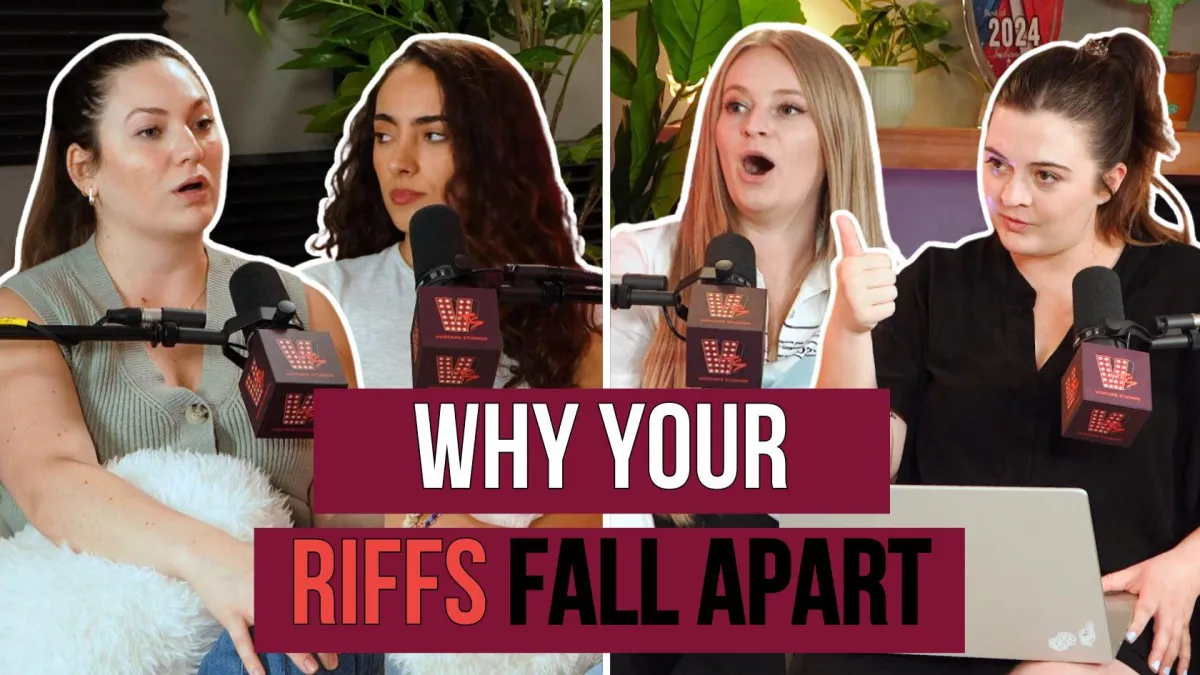
Can’t Riff? Start Here
Riffing is one of those things singers often think they either “can” or “can’t” do. But just like vibrato or high notes, it’s not a magical talent, it’s a learnable skill rooted in coordination and rhythm.
Let’s break it down.
What’s Actually Happening in a Riff?
When you riff, you’re singing a sequence of notes in quick succession. And while the notes matter, what matters even more is how those notes are spaced and shaped.
“There’s a difference between fast and smooth… When you go too fast too soon, you scramble the riff.”
Trying to sing all the notes at full speed before your body understands the pattern is like trying to tap dance without knowing the steps.
Your first step should always be to identify each note in a riff. Once you have all the notes give them all their own syllable - that’ll make sure that you’re not slurring all the different notes together, but rather practicing it cleanly.
Slow Down to Lock It In
The biggest unlock? Sing your riffs slower than you think you need to.
This allows your muscles to form the right pattern. If you go too fast, your brain panics and your voice follows. But if you go slow, your nervous system gets the information it needs to automate the motion.
“Think of it like dancing. You wouldn’t just flail and hope for the best. You learn the moves first.”
Start slow, then gradually build up speed—just like a dancer would.

Riffing Is Rhythm
Riffs aren’t just about pitch. They’re deeply tied to rhythm.
“Most singers mess up the rhythm of a riff, not the notes. And it’s the rhythm that makes the riff land.”
Practicing with a metronome, a looper, or even just clapping out the rhythm before you sing can make a huge difference. You want your riffs to sit in the pocket, not float above the beat.
Don’t Just Copy - Understand the Shape
When learning a riff from another singer, it’s tempting to just mimic the sound. But if you don’t understand the shape of the riff, you’ll struggle to replicate it.
Listen for:
Where does the riff start and land?
Which notes are emphasized?
How is it grouped rhythmically?
Then sing it like you’d say a sentence - with phrasing, not just pitches.
And if the riff is really long, consider breaking it into sections first and practicing each section separately, adding one to the next. This will make it much more digestable.
Key Takeaway: Riffs Need Space to Breathe
If your riffs feel messy, it’s not because your voice is broken. It’s because your brain is overwhelmed. The fix?
Go slower than you think you need
Break it into small, rhythmic chunks
Focus on musical phrasing, not just speed
When you treat riffs like expressive ideas - not vocal tricks - they finally start to land.
🎧 Watch us break down a riff here (example starts at 32:30):
Prefer Listening To The Podcast On Your Favorite Platform? Listen Below.


